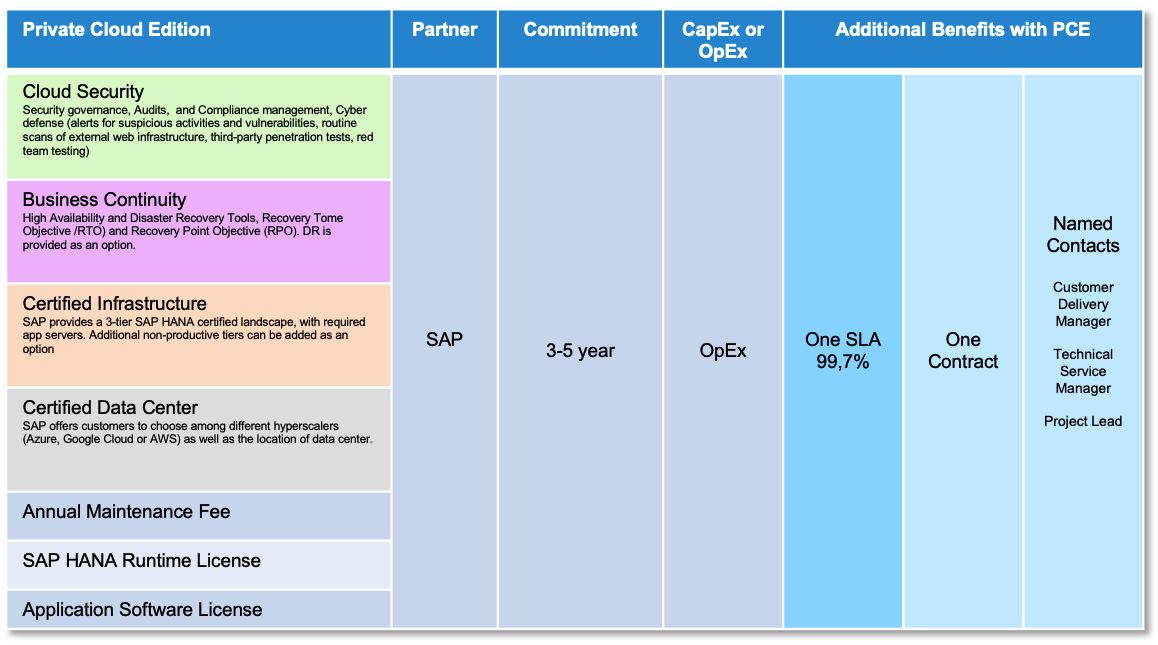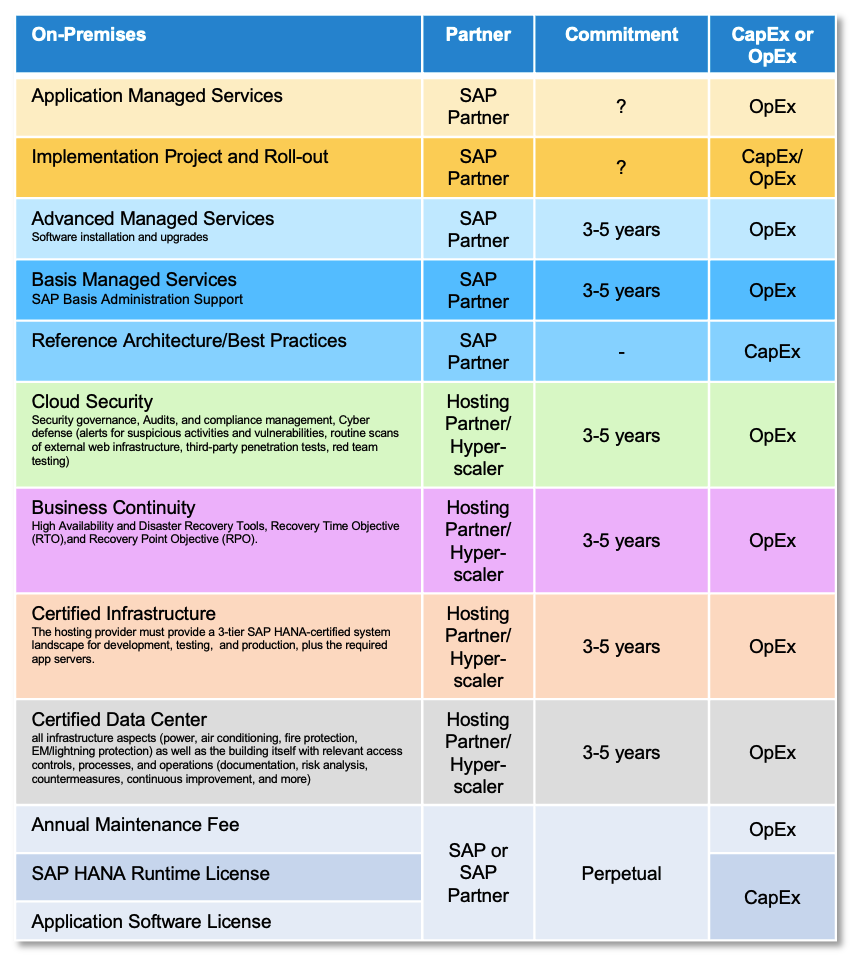
- SAP Community
- Products and Technology
- Financial Management
- Financial Management Blogs by SAP
- Comparing Apples to Apples - SAP GTS on-premises v...
Financial Management Blogs by SAP
Get financial management insights from blog posts by SAP experts. Find and share tips on how to increase efficiency, reduce risk, and optimize working capital.
Turn on suggestions
Auto-suggest helps you quickly narrow down your search results by suggesting possible matches as you type.
Showing results for
Product and Topic Expert
Options
- Subscribe to RSS Feed
- Mark as New
- Mark as Read
- Bookmark
- Subscribe
- Printer Friendly Page
- Report Inappropriate Content
09-19-2023
4:26 AM

When deciding between an on-premises implementation of SAP Global Trade Services, edition for HANA, and SAP GTS, edition for SAP HANA Private Cloud edition, it is essential to compare apples to apples.
We will break down the differences and help you make the right decision.
What is needed to make an on-premises software run?
The Software Layer
Let us begin by looking at the base layer, the software license itself.

In addition to the application software license, an SAP HANA Runtime license is calculated as a percentage (15%) of the software license value or HSAV (HANA Software Application Value). On top of that, an annual and perpetual yearly maintenance fee is added (17% or 22%).

In comparison, under Private Cloud Edition, the three cost elements will become a time-limited commitment and change from CapEx to OpEx.
The Hosting Layer
Like all software, SAP GTS, edition for SAP HANA, needs hardware and other infrastructure to come to life. In an on-premises implementation, this can be done with in-house IT resources, but it is most commonly provided by professional hosting companies. Some of these hosting companies are called "hyper scalers" by SAP and include players such as Microsoft Azure, Google Cloud, and AWS.
The Hosting Layer consists of 4 sub-layers:
Certified Data Center
A certified data center must provide all infrastructure aspects (power, air conditioning, fire protection, EM/lightning protection) and the building with relevant access controls, processes, and operations (documentation, risk analysis, countermeasures, continuous improvement, and more). A certified data center must meet regulations such as ISO 27001.
Certified Infrastructure
The hosting provider must provide a 3-tier SAP HANA-certified system landscape for development, testing, and production, plus the required app servers.
Business Continuity
High Availability and Disaster Recovery Tools, Recovery Time Objective (RTO), and Recovery Point Objective (RPO) must be provided to secure business continuity.
Cloud Security
Cloud Security includes security governance, Audits, compliance management, and Cyber Defense (alerts for suspicious activities and vulnerabilities, routine scans of external web infrastructure, third-party penetration tests, and red team testing).

With SAP Global Trade Services, edition for SAP HANA, Private Cloud edition, the hosting costs are included in the Annual Contract Value (ACV). With the software and maintenance, you will have one contract, with one joint service level agreement (SLA), and assigned named contacts at SAP supporting you during the duration of the contract.
Within certain limitations, SAP lets you select the location of the data center and the "hyper scaler" of your choice. This means you may even be able to stay with your current hosting partner and still benefit from the single contract, single SLA, and close working relationship with SAP.
The Service Layers
On top of the software and hosting services, several service layers are required.

The service provider, often a different one than the hosting provider, should provide the latest best practices and system architectures to ensure that the installation and operations align with SAP standards, not only enabling you to run as close to standard as possible but also enabling you to eventually leave the current service provider if you want.
In addition, the provider should support you with SAP Basis services and more advanced services, such as installation of the applications, including the ability to help you with Service Pack installations and version upgrades during the duration of your contract.

With SAP Private Cloud Edition (PCE), you get all the services mentioned in your contract, again under one SLA, with one responsible partner (SAP) and named contacts to support you. PCE brings you closer to SAP and closer to SAP standards.
Implementation and Roll-out

Independent of deployment options, on-premises, or PCE, some elements remain the same. This includes the implementation project, roll-out, and other services.
Complete comparison - On-premises vs. Private Cloud Edition
The illustration below provides a complete comparison between On-premises and Private Cloud Edition.

The Private Cloud concept from SAP is gaining popularity because it simplifies and clarifies. It reduces the number of partners you interact with and defines the responsibilities under one single contract and service level agreement.
Functional Comparison
In addition to the things already listed, an important aspect is, of course, the answer to this question; Are there any functional differences between the two options.
The answer depends on the scope of the project. If the project scope includes filing customs declarations, it is essential to be aware of the following:
SAP GTS, edition for SAP HANA, Private Cloud Edition only supports the electronic submission of customs declarations through third parties, such as Seeburger Cloud or customs brokers, who can submit the declarations on behalf of the importer/exporter.
Financial Comparison
With the technical and functional comparison completed, we should also look at how you can financially compare the two options. At first glance, the software license price and the cost for the Private Cloud Edition can be hard to compare. The overview below will hopefully make it easier to compare apples to apples also from a financial viewpoint.

As seen in the table above, all cost elements in on-premises must be included to make a fair comparison with the PCE offering.
Conclusions
The price of a traditional software license for SAP GTS, edition for SAP HANA, can not easily be compared with the annual fee for SAP GTS, edition for SAP HANA, Private Cloud Edition. We need to compare apples to apples. This blog aims at helping to do exactly that.
In addition, elements like the number of partners involved, end-to-end responsibility, and business relationships play an important role when deciding on the correct deployment option for you and your organization.
- SAP Managed Tags:
- SAP Global Trade Services
Labels:
You must be a registered user to add a comment. If you've already registered, sign in. Otherwise, register and sign in.
Labels in this area
-
Business Trends
145 -
Business Trends
16 -
Event Information
35 -
Event Information
9 -
Expert Insights
8 -
Expert Insights
31 -
Life at SAP
48 -
Product Updates
521 -
Product Updates
66 -
Technology Updates
196 -
Technology Updates
11
Related Content
- What is coming with first SAP CPQ release in 2024? in Financial Management Blogs by SAP
- The Transition from SAP GTS 11 to SAP GTS, edition for SAP HANA in Financial Management Blogs by SAP
- SAP IAG vs Access Control: Which one is right for me? in Financial Management Blogs by Members
- How does SAP HANA Search work in SAP Global Trade Services - Sanctioned Party List Screening? in Financial Management Blogs by SAP
Top kudoed authors
| User | Count |
|---|---|
| 1 | |
| 1 | |
| 1 | |
| 1 | |
| 1 | |
| 1 | |
| 1 | |
| 1 |
